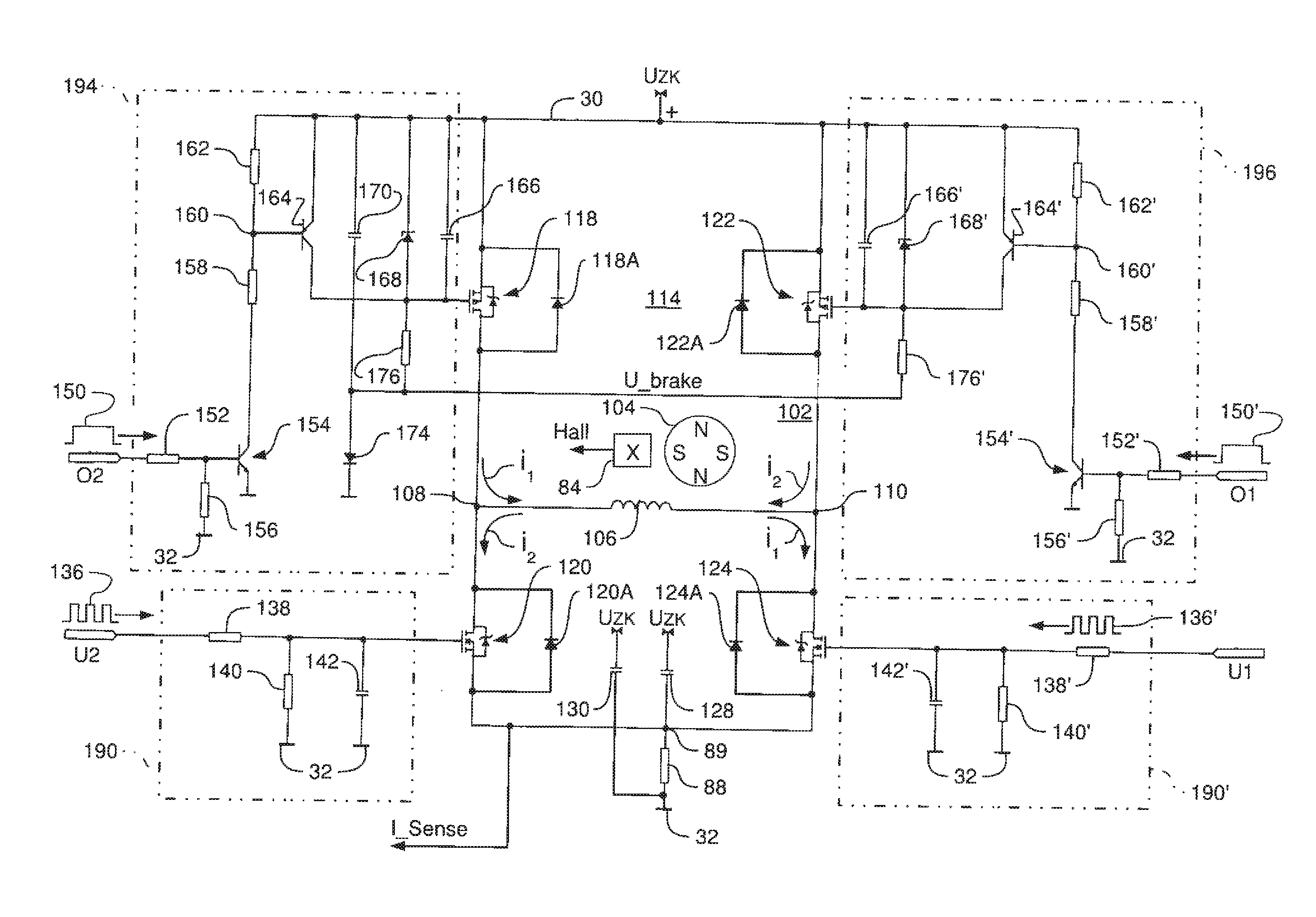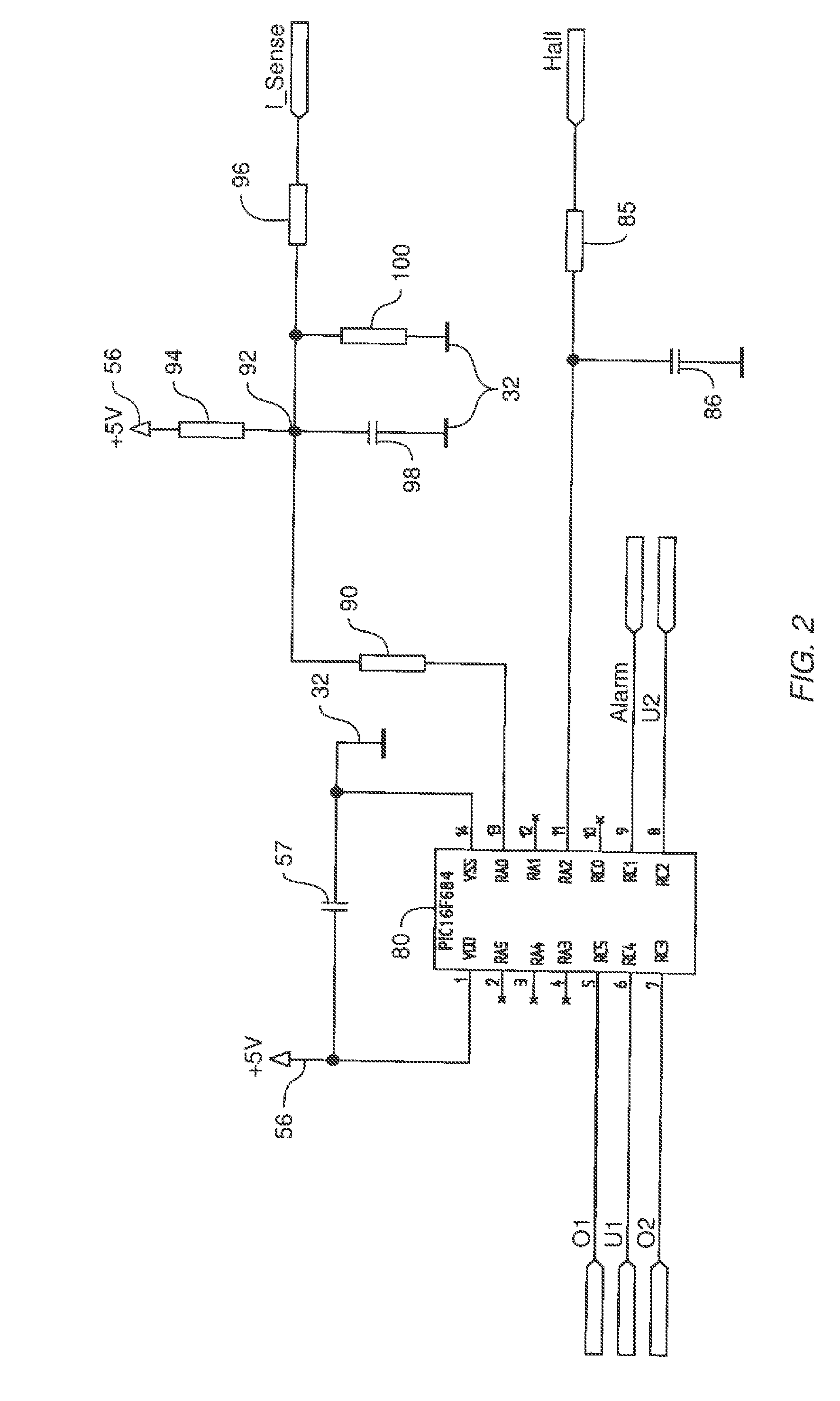Electric motor
a technology of electric motors and motors, applied in the direction of synchronous motor starters, dc motor stoppers, ac motor stoppers, etc., can solve the problems that the fan being driven by such a motor cannot reach high rotation speeds, and the short-circuit braking function is automatically activated, so as to facilitate the startup
- Summary
- Abstract
- Description
- Claims
- Application Information
AI Technical Summary
Benefits of technology
Problems solved by technology
Method used
Image
Examples
Embodiment Construction
[0015]FIG. 1 shows positive branch 30 of a DC link circuit, a voltage UZK being present between said branch and ground 32, during operation. In the case of a fan, this voltage is often in a range between 8 and 100 VDC, but can also be higher or lower.
[0016]Some motors can be operated in a relatively wide voltage range, e.g. between 20 V and 80 VDC. Located between positive branch 30 and ground 32 is a capacitor 34 for filtering out high-frequency interference, and a so-called “link circuit” capacitor 36 having a higher capacitance, usually an electrolytic capacitor.
[0017]Lead 30 can be connected via a fuse 38, a node 40, and a diode 42 to an external operating voltage UB, depicted here symbolically as battery 44, e.g. as the local battery of a telephone switching center. Located between node 40 and ground 32 is a capacitor 48 that serves to filter out interference.
[0018]FIG. 1 also shows a circuit 52 whose positive input 54 is connected via a diode 55 to node 40, and that generates ...
PUM
 Login to View More
Login to View More Abstract
Description
Claims
Application Information
 Login to View More
Login to View More - R&D
- Intellectual Property
- Life Sciences
- Materials
- Tech Scout
- Unparalleled Data Quality
- Higher Quality Content
- 60% Fewer Hallucinations
Browse by: Latest US Patents, China's latest patents, Technical Efficacy Thesaurus, Application Domain, Technology Topic, Popular Technical Reports.
© 2025 PatSnap. All rights reserved.Legal|Privacy policy|Modern Slavery Act Transparency Statement|Sitemap|About US| Contact US: help@patsnap.com



